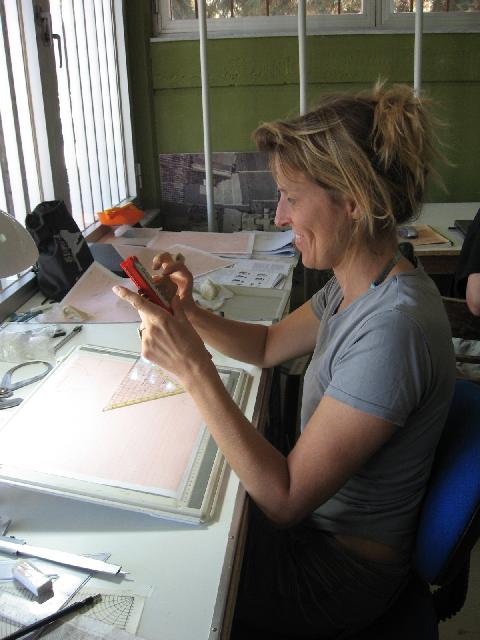dromos, finding several interesting painted sherds. They generally
have a cream-colored background with red, yellow, and black geometric
designs. In the chamber, we excavated over 3 feet in two days.
Everything that we excavated was “fill,” dirt that had fallen into the
chamber when the roof fell in long ago. In this soil, there has been
no pottery, so we are hoping to find it when we get to the floor of
the chamber.
dig after August 2nd. That means that everything has to be finished
on the site by Saturday. Our whole team plans to work very hard to
make that happen.
and Bryn Mawr College. We celebrated on Sunday with our annual
“Christmas in July” party. On this evening, we had a potluck and
everyone brought something to share. We had sushi, lasagna, salad,
appetizers, drinks, and special desserts! We also played “Secret
Santa,” when everyone gives one other person a gift. My secret Santa
gave me a set of Walkie-Talkies, so that I do not have to yell when I
need something on the site.
for all their hard work and time. We went to a restaurant in the
village called Koutsomodi (“Koot-so-MO-dee”). The workmen brought
their families, and we enjoyed lots of traditional Greek dishes. We also danced traditional Greek dances around and around the restaurant!



